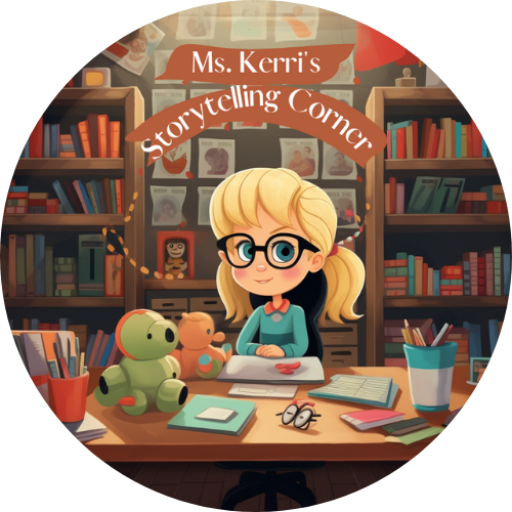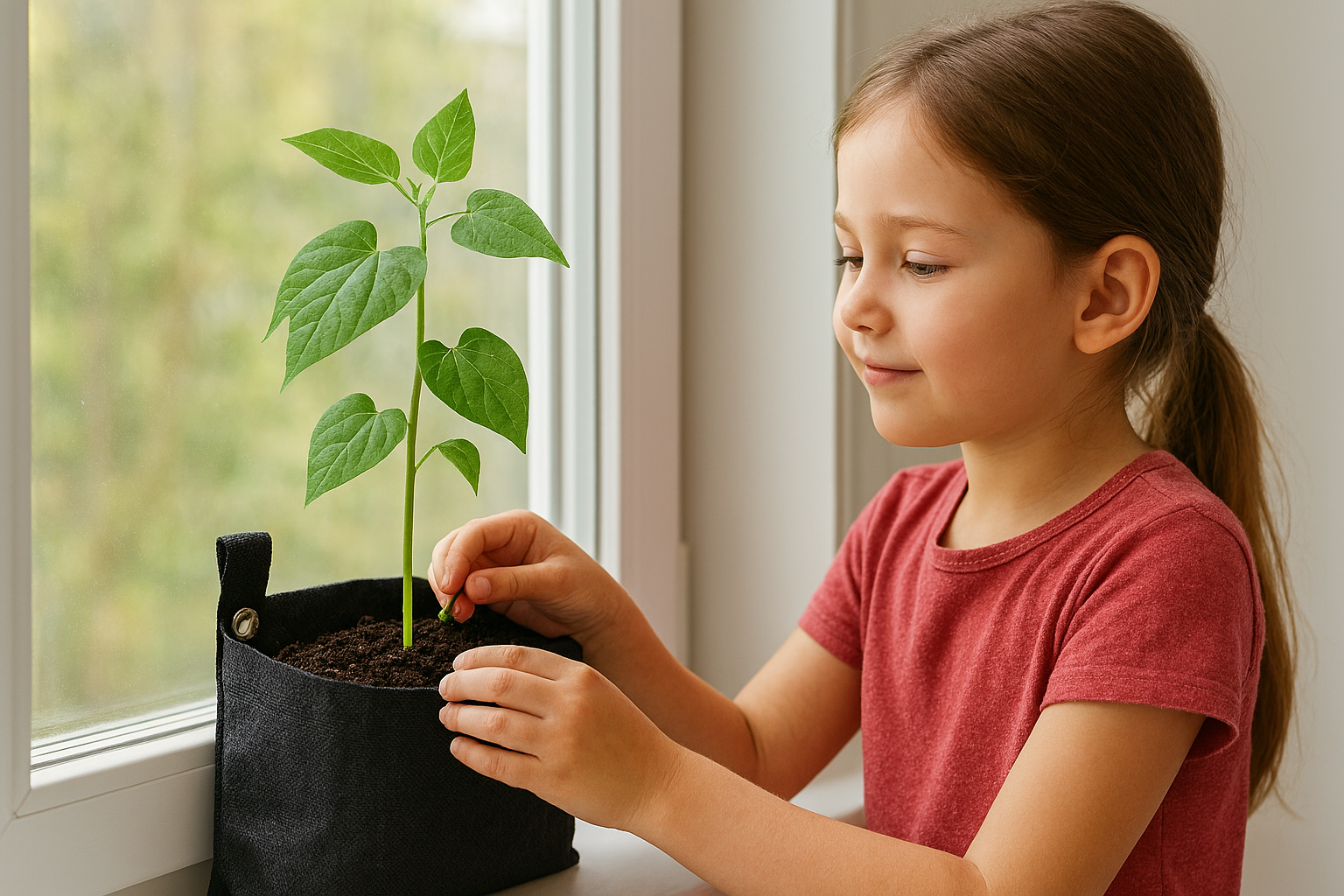You know that moment when your preschooler asks “why” for the hundredth time today? That’s not exhausting—that’s the sound of a budding scientist! And honestly, there’s no better way to channel all that curiosity than through hands-on science experiments for preschoolers.
I’m talking about real, messy, delightful activities that turn your kitchen into a mini laboratory and your little one into a tiny explorer. No PhD required, I promise.
Whether you’re scrambling for rainy day activities or just want to see your child’s eyes light up with wonder, I’ve rounded up 15 preschool science activities that you can pull off with stuff you probably already have at home.
The Magic of Science for Preschoolers

Why Hands-On Learning Matters
Here’s the thing about science—it’s not about cramming facts into little heads. It’s about letting them explore, touch, wonder, and occasionally make a mess (okay, frequently make a mess).
Your preschooler? They’re already doing science when they’re stacking blocks and watching them fall, or mixing all their food together at dinner. We’re just giving them permission to do it on purpose! Through simple, hands-on science experiments, they’re secretly building fine motor skills, learning to focus, and developing problem-solving abilities that’ll serve them for years.
Want to dive deeper into how these early experiences shape young minds? Check out more at Preschool Inspirations.
15 Hands-On Science Experiments for Preschoolers
Alright, let’s get to the good stuff. These experiments are easy, safe, and guaranteed to get some “oohs” and “ahhs.” No fancy equipment needed—just curiosity and a willingness to embrace a little chaos.
1. The Classic Volcano Eruption
This one never gets old. Mix baking soda and vinegar in a small container and watch your child’s entire face transform with joy as it erupts everywhere.
What They Learn: Chemical reactions and cause-and-effect relationships.
Parent Tip: Throw in some food coloring to make it look like real lava. Red and orange work great, but honestly, purple lava is pretty cool too!
2. Rainbow Walking Water
Set up a few cups with colored water and connect them with paper towels. Then step back and let time do its magic as the colors literally walk from cup to cup and blend together.
Learning Focus: Absorption and color mixing.
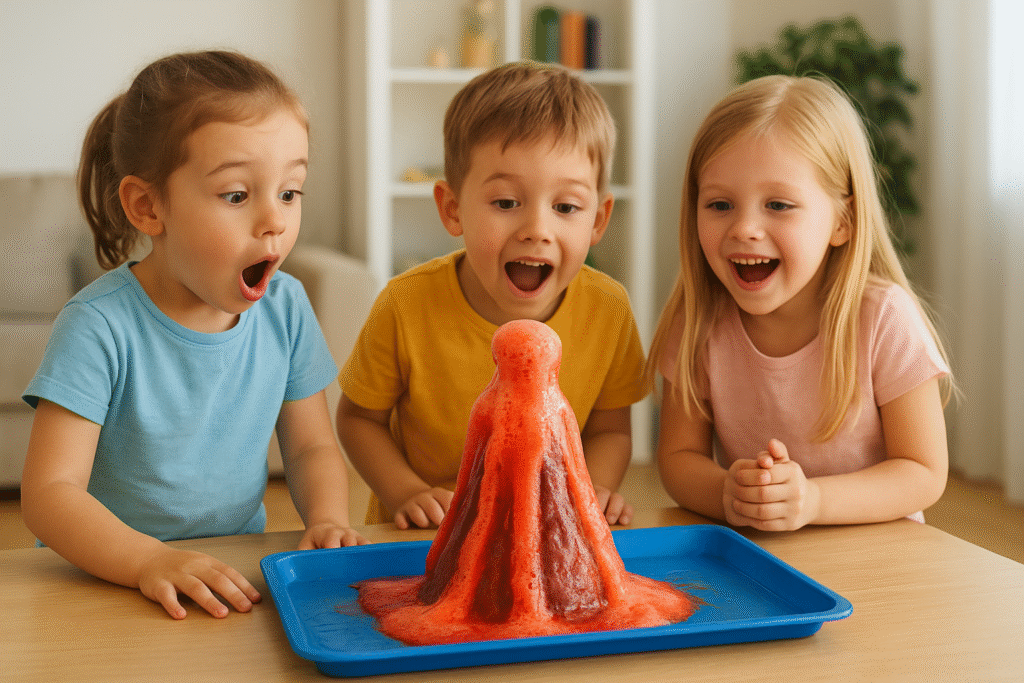
3. Sink or Float Test
Fill a bowl with water and hand your kiddo a basket of random objects—coins, leaves, buttons, bath toys, whatever. Let them test each one and make predictions.
STEM Skill: Observation and hypothesis testing.
Want more floating experiments? Head over to Little Bins for Little Hands for tons of ideas.
4. Magic Milk Experiment
Add drops of food coloring to milk, then touch the surface with a cotton swab dipped in dish soap. The colors explode apart like fireworks! My kids call this one “color explosion” and request it constantly.
Lesson: Surface tension and chemical reactions.
5. Growing a Bean in a Bag
Tuck a damp paper towel and a bean seed into a clear plastic bag, tape it to a sunny window, and wait. Within days, you’ll have roots reaching down and a little sprout reaching up. It’s like having a front-row seat to a miracle.
Science Concept: Plant growth and life cycles.
6. Melting Ice Treasure Hunt
Freeze small toys inside ice cubes (the night before works perfectly). Give your preschooler salt, warm water, and whatever safe tools they want to use, then let them rescue their frozen friends.
What They Learn: States of matter and temperature effects.
For more ways to make ice exciting, check out Fun Learning for Kids.
7. Balloon Rocket Race

String up a line between two chairs, thread a straw through it, tape an inflated balloon to the straw, and let it rip! It zooms across the room like a tiny rocket ship.
Concept: Air pressure and propulsion.
8. Shadow Play
Grab flashlights and toys, dim the lights, and make shadow shows on the wall. Move things closer and farther away. Watch the shadows grow and shrink. It’s physics disguised as playtime.
Focus Skill: Light and perspective.
9. Magic Color Changing Flowers
Put white flowers (carnations work great) in cups of colored water. Come back in a few hours and—whoa—the petals have changed color! It feels like actual magic to a preschooler.
STEM Concept: Capillary action in plants.
You can find all the details over at Buggy and Buddy.
10. Fizzy Ice Cubes
Mix baking soda with water and freeze into cubes. When you drop vinegar on them, they fizz and bubble as they melt. It’s like a slow-motion volcano!
Lesson: Chemical reactions and temperature awareness.
11. Balloon Blow-Up with Baking Soda and Vinegar
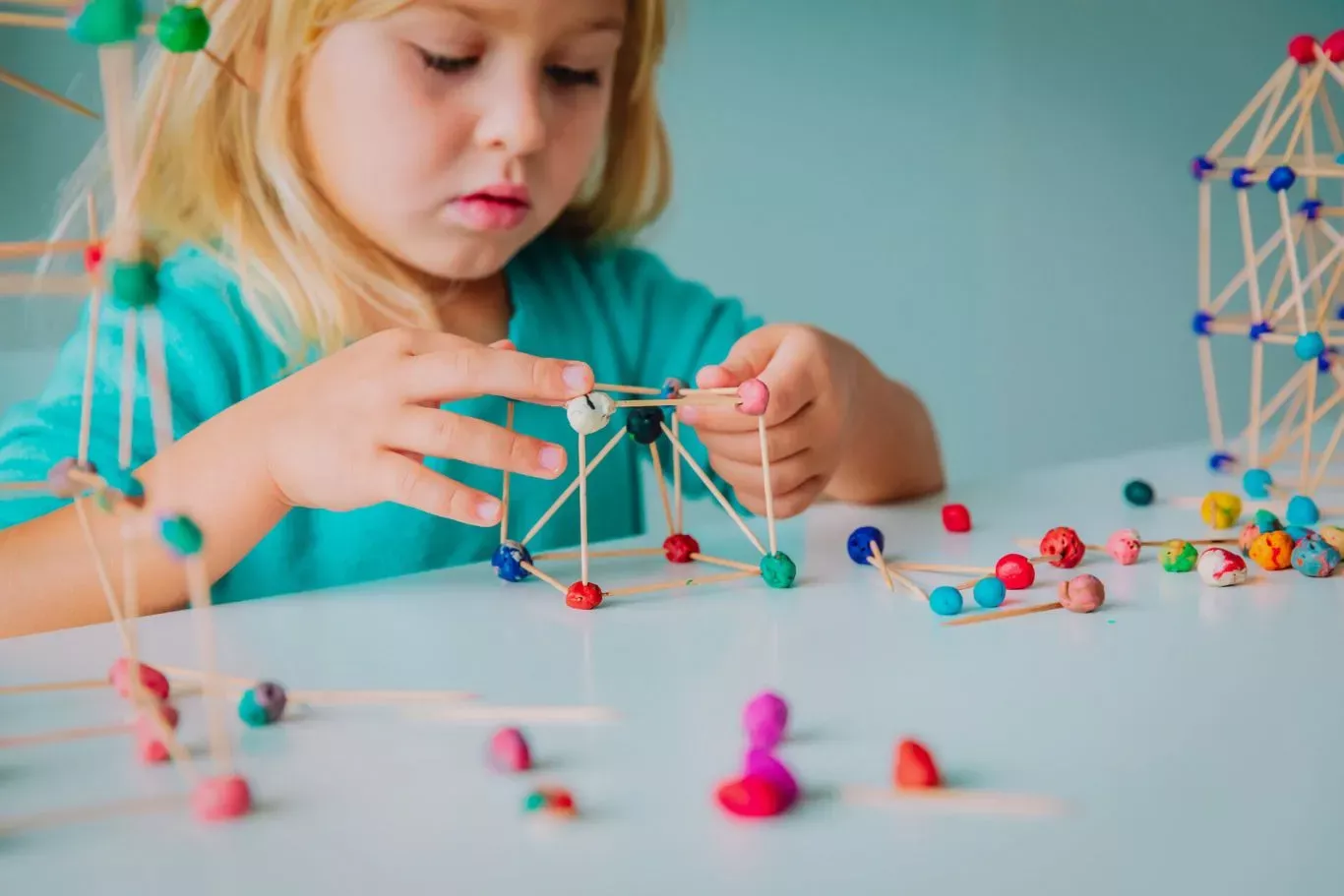
Pour vinegar into a bottle, dump baking soda into a balloon, attach the balloon to the bottle, and watch as it inflates all by itself. No breath required!
Learning Focus: Gas expansion and reactions.
12. Floating Paper Clips
This one feels like a magic trick. Show your preschooler how to gently place a paper clip on a small piece of tissue paper, set it on water, and watch as the tissue sinks but the paper clip stays floating.
Concept: Surface tension.
13. Rain Cloud in a Jar
Fill a jar with water, top it with a thick layer of shaving cream (the “cloud”), then drop colored water onto the cloud. Eventually, it gets too heavy and “rains” down through the cream. It’s the water cycle in action!
Focus Skill: Weather and water cycle.
Want to explain more weather concepts? Visit The Science Kiddo for great resources.
14. Magnetic Treasure Hunt
Hide magnetic items in a bin of rice or sand and give your little scientist a magnet wand to hunt them down. It’s part science, part treasure hunt, all fun.
STEM Concept: Magnetism and discovery.
15. Rainbow Density Tower
Carefully layer liquids with different densities—colored water, syrup, oil, and dish soap—to create a floating rainbow tower. This one takes a steady hand but the result is stunning.
Lesson: Density and weight of liquids.
Tips for Success with Preschool Science Activities
1. Emphasize the Process, Not the Product

Look, sometimes experiments flop. The balloon doesn’t inflate. The colors don’t separate. And you know what? That’s actually perfect! Science is about the journey of discovery, not getting Instagram-worthy results every time.
2. Encourage Questions
Let your preschooler lead with their curiosity. Ask open-ended questions like:
“What do you think will happen next?”
“Why do you think it changed like that?”
“What else could we try?”
3. Keep It Safe
Stick with non-toxic materials and always supervise. Skip the glass containers and stick to plastics. If you wouldn’t want them eating it, maybe choose a different experiment.
4. Integrate Daily Life
Here’s a secret: You’re probably already doing science experiments for preschoolers without realizing it! Cooking is chemistry. Gardening is biology. Bath time is physics. Start noticing the science that’s already happening around you.
Making Science a Habit at Home
You really don’t need a science degree to raise a curious kid—just a willingness to explore together. Here’s how to sneak preschool science activities into your everyday routine:
Morning Walks: Point out bugs, plants, clouds, birds. Everything is new and fascinating when you’re three!
Snack Time: Talk about whether things are solid or liquid, smooth or crunchy. Bonus: you’re building vocabulary too.
Bath Time: Why do some toys float? What makes bubbles? What happens when we pour water?
Story Time: Choose books about weather, animals, space, or nature. Stories plant seeds of wonder.
For more creative ideas on building a love for science, visit Hands On As We Grow.
Common Challenges and How to Overcome Them
ChallengeSolutionShort Attention SpanKeep experiments under 10 minutes. If something takes longer, break it into steps across a few days.Messy Play ConcernsSet up outside when possible, or use a big tray indoors. Accept that mess = learning.Limited MaterialsMost of these use recyclables and kitchen items. You don't need fancy supplies—creativity beats budget every time."It Didn't Work!" MomentsCelebrate the "failures"! They teach resilience and show that even scientists don't get it right the first time.
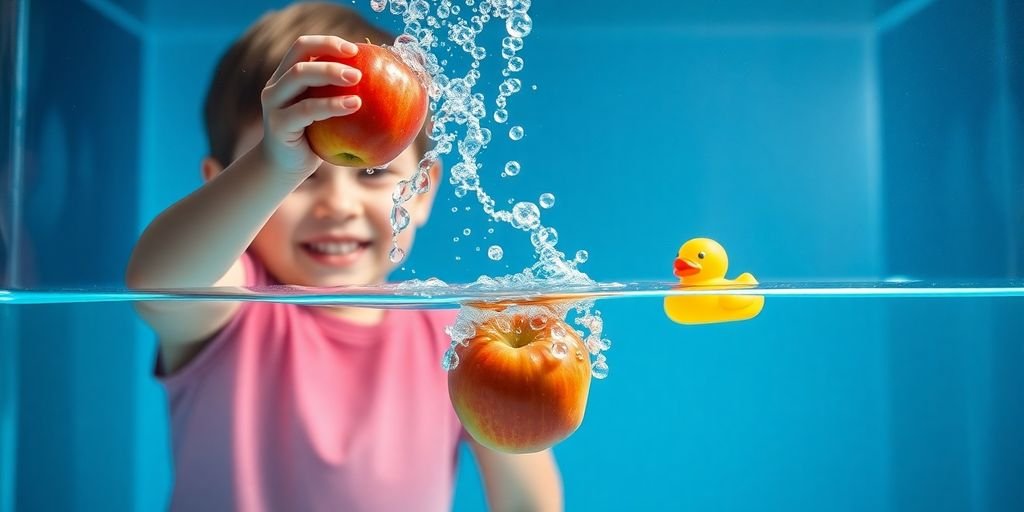
FAQs
Q1: What are easy science experiments for preschoolers?
Start with the visual, quick ones that deliver immediate results—vinegar volcanoes, color mixing, and sink-or-float tests are always winners because kids can see what’s happening right away.
Q2: Are science experiments safe for preschoolers?
Absolutely, as long as you’re using non-toxic materials and staying close by. Stick to food-safe ingredients like baking soda, vinegar, and dish soap, and you’re golden.
Q3: How can I make science fun for my preschooler?
Follow their interests! If they’re obsessed with dinosaurs, do experiments about fossils or volcanoes. Space fan? Make moon sand or constellation jars. When it connects to what they already love, engagement goes through the roof.
Q4: What skills do preschool science activities teach?
Beyond just learning “science stuff,” kids develop observation skills, learn to make predictions, practice problem-solving, build fine motor control, and even work on early math reasoning through measuring and counting.
Q5: How often should we do science at home?
Even once or twice a week is enough to build strong curiosity and confidence. Quality over quantity—one really engaged experiment beats five rushed ones.
Q6: Can I connect science experiments to literacy or math?
You bet! Count the drops. Measure the ingredients. Write or draw a “science story” about what you discovered. Learning is all connected anyway—we just like to put it in separate boxes.
Conclusion
Science experiments for preschoolers aren’t about creating the next Einstein (though who knows?). They’re about nurturing that beautiful, natural curiosity that makes kids want to touch everything, ask a million questions, and figure out how the world works.
Through these simple preschool science activities, you’re building way more than knowledge. You’re building a foundation of observation, problem-solving, creativity, and the confidence to explore. Plus, you’re creating memories of discovery you’ll both cherish.
So grab that bowl, raid your pantry for supplies, and tap into your child’s boundless imagination. The best science lab you’ll ever need is already right there in your home—you’ve just been calling it a kitchen.


Ms. Kerri’s Corner provides a exciting virtual space for preschool learning. Through a variety of engaging activities, she exposes young minds to early math, literacy, science and social-emotional skills in a developmentally appropriate way. Centers for blocks, art, books and music allow children to explore hands-on learning at their own pace. Guided lessons subtly introduce number sense, letter sounds and narrative thinking. Careful observation gives insight into each child’s progress across domains. Viewers are also invited to participate, reinforcing that their ideas are valued. By making learning fun yet purposeful, Ms. Kerri lays the groundwork for future academic success while fostering creativity and imagination. Her program offers preschoolers valuable screen-based learning experiences.
